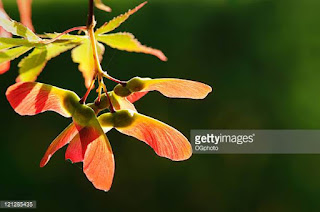Most plants start life as seeds. Seeds are produced by plants for reproduction! These seeds help produce the next generation of plants, but in order to do that they need to disperse to new areas. After all, if plants just dropped their seeds right below themselves, the parent plant would compete for resources (water, sun, and space).
Dispersion is the relocation of seeds to a new location in order for them to find the resources necessary for growing. Depending on the species of plant, they might use different forms of dispersal. Lets take a look at these forms and see if you can spot any of them while you are on the hunt for seeds!
Wind: Some plants use wind to disperse their seeds! These seeds are usually smaller and lighter, making it easy to be carried by the wind. They often have special structures to help them travel in the air such as fluff (like on milkweed or dandelions) or wings (like maple keys).
Fire: These seeds will often be found in cones. These cones are "sealed" with a "glue" produced by the parent tree. This glue then needs to be melted in order for it to come out of dormancy and sprout! The way to melt the glue? Fire of course!
Ballistic: Ka-BOOM! Some seeds use an explosion to disperse! These seeds will reside in pods and once these pods dry out they will burst, throwing seeds in every direction!
Animals: One of the most common dispersal strategies you may have noticed around your home is through animals! Have you ever noticed an animal:
1) carrying a bur on its fur? Some seeds have latches or hooks on them that will get caught in an animals fur. This will then be carried to a new location where it will then drop to the ground after the animal removes it from its fur.
3) eating fruit or a berry? Well what goes in, must come out! When animals eat fruit and berries, they will also eat seeds of that fruit! Many of these seeds are eaten whole and then when an animal later defecates (poops) these seeds will be dropped in a new location!
What seeds have you started to see on your outdoor adventures? We are very excited to hear about how your activities are going!
Three cheers for dispersing seeds and buzzing bees!

















